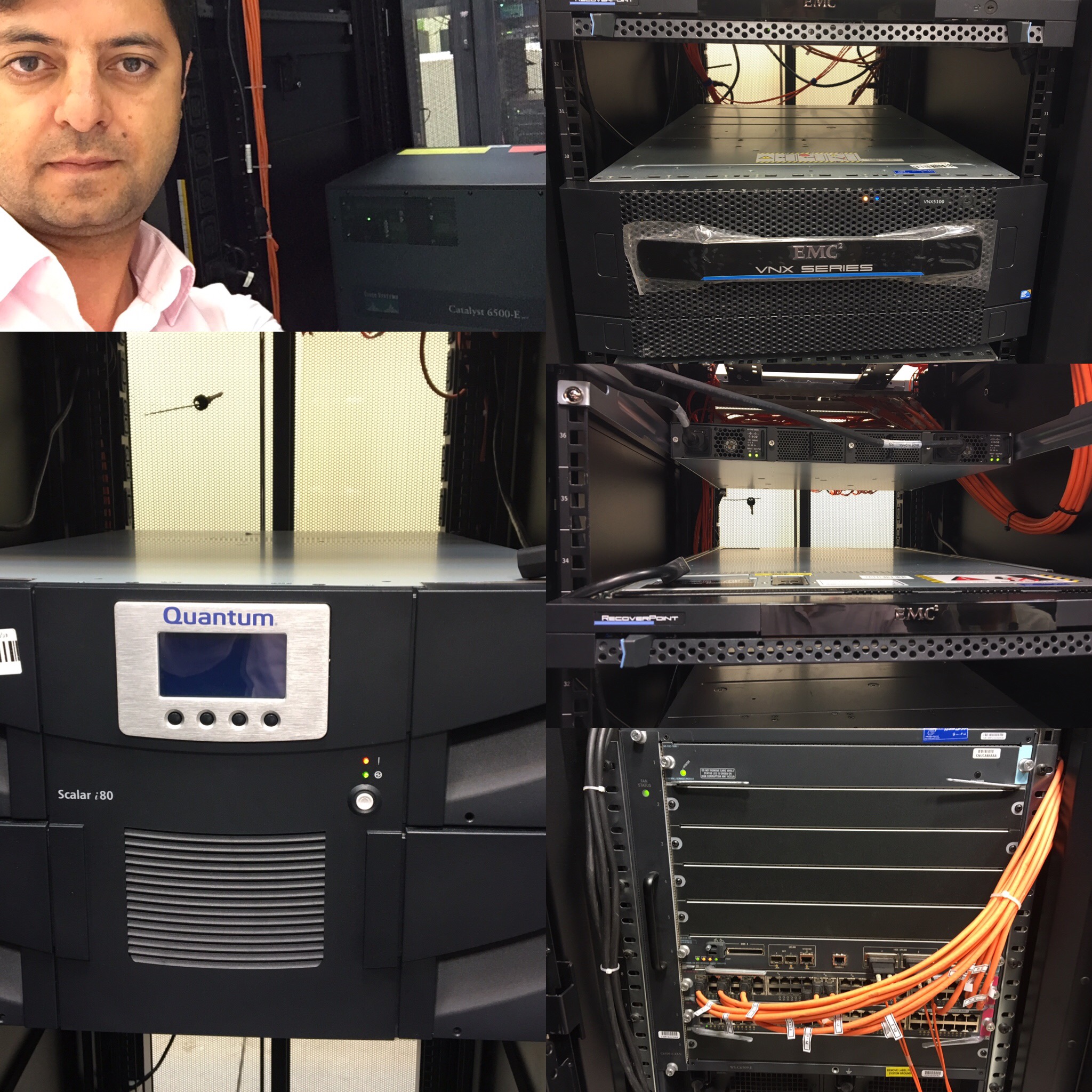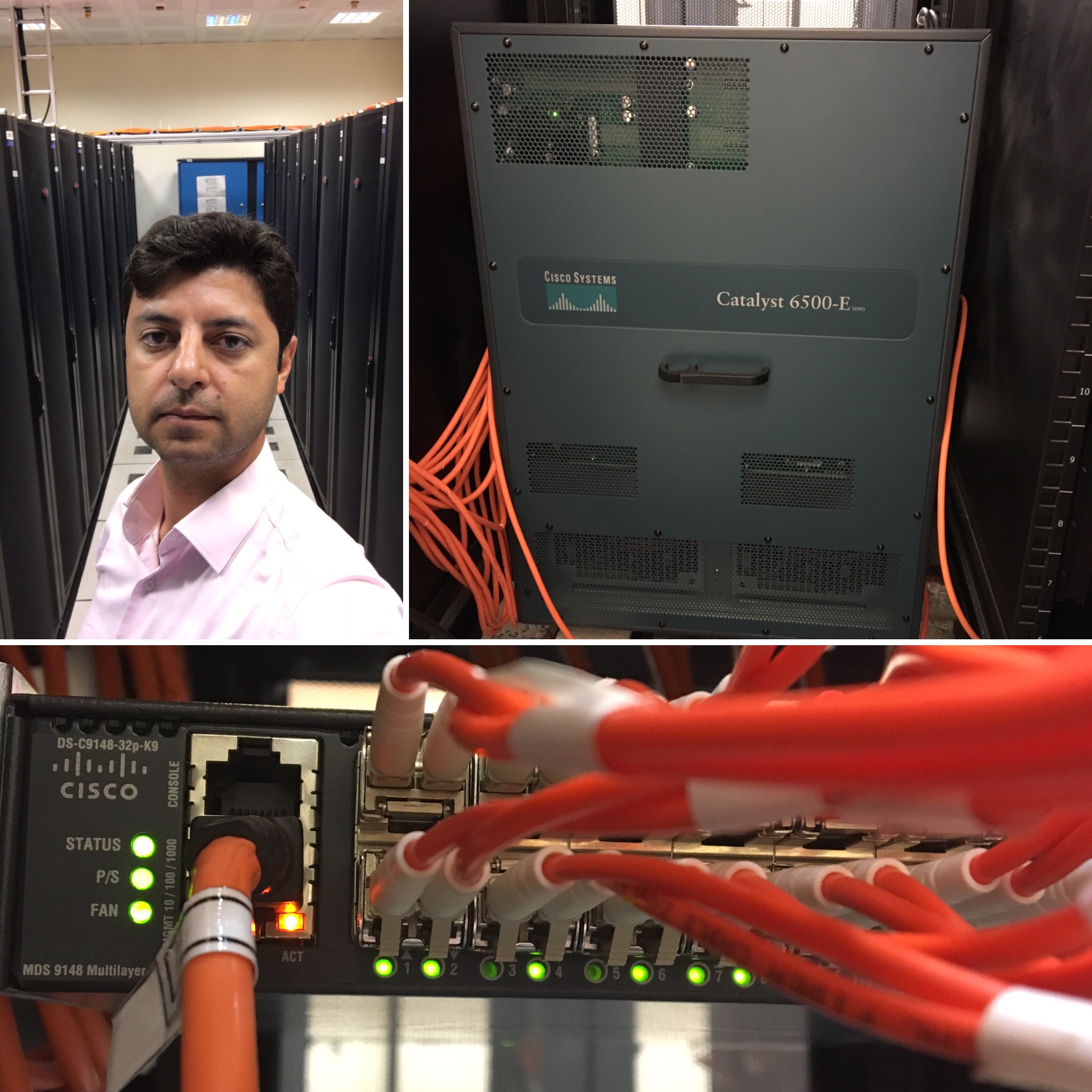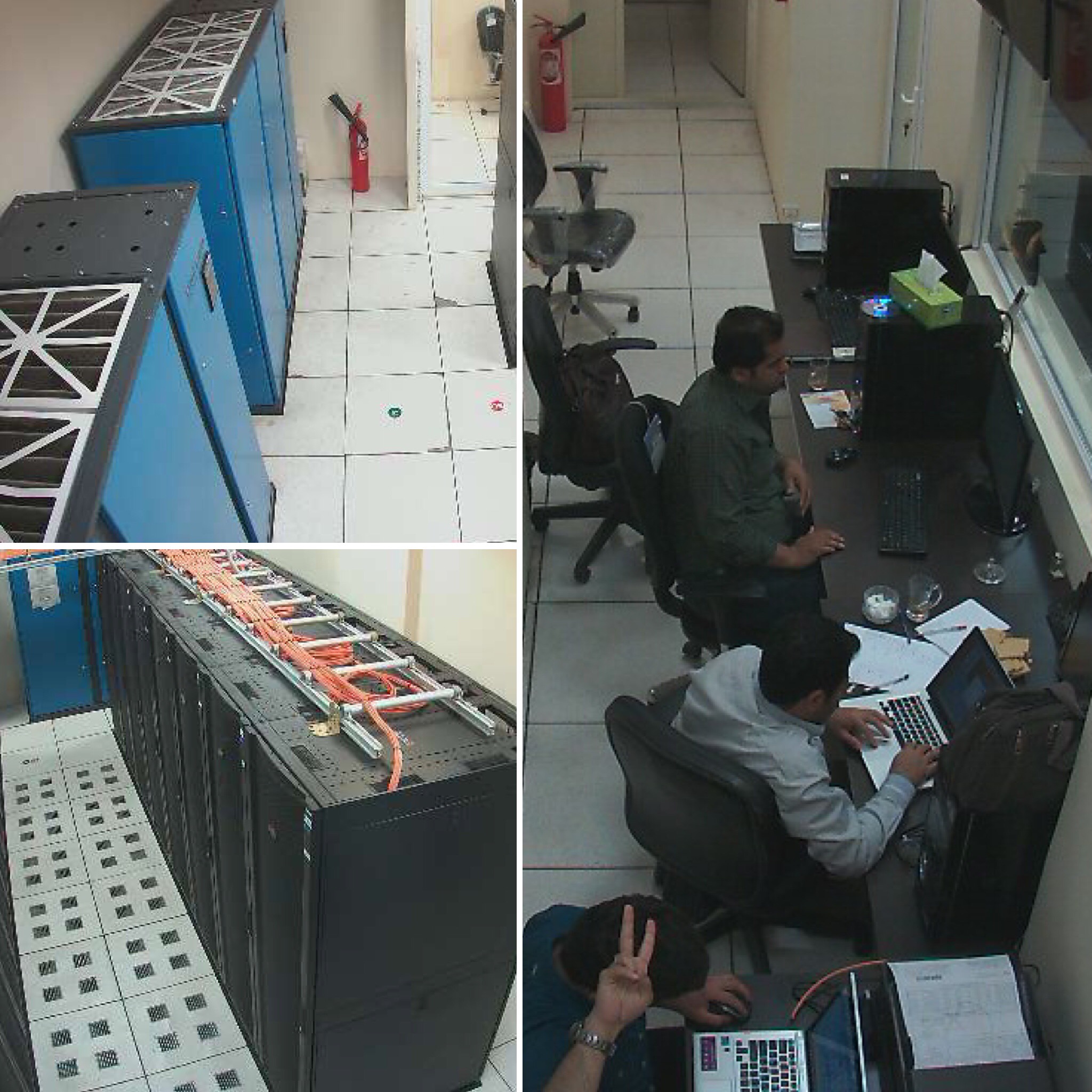
انجمن مدیران و راهبران شبکه
Network Managers and Administrators
انجمن مدیران و راهبران شبکه
Network Managers and Administratorsنحوه پنهانکاری آدرس مبدا - Stun messages generated by WebRTC
جهت یاد آوری خودم 
Google Chrome:
chrome://flags
WebRTC Stun origin header -> Disable
Mozila FireFox:
about:config
media.peerconnection.ena
9 Immutable Laws of Network Design
9 Immutable Laws of Network Design
Follow these simple rules to ensure your network is stable, secure and built to last as you overlay new services and applications.
Each year, my company has the opportunity to work with many clients on their network architectures, designs and configurations. We also work with clients when they have network issues and need troubleshooting assistance. Based on those many years of experience with a variety of environments and customers, I've developed this list of nine immutable laws of network design.
Following these simple rules helps you create and maintain a stable, long-lasting network infrastructure that will be invaluable as your organization begins to overlay additional services or applications. Whether you’re redesigning for wireless, preparing for software-defined networking (SDN) or simply expanding your virtualized environments, designing by these rules will increase the stability, manageability and security of your network.
1. Know, Don’t Guess
Two phrases uttered frequently during network design are “I’m pretty sure” and “I think.” As a professional tasked with discovering, researching and documenting client networks, I can tell you those phrases don’t cut it in our organization, and they shouldn’t be accepted in yours. There’s more than a 50% chance what you think you know is wrong. Networks are inherited, many admins may touch them, and they’re frequently changed in a fit of fury, troubleshooting or testing. When documenting a network or committing even a minor change, you should always look, verify and know--never guess. The mantra in our office is, “No information is better than wrong information.”
2. Avoid Dangling Networks
As SDN, virtualization and application-based technologies creep into our networks, we need to take a hard look at configuration sprawl and prepare for a massive cleanup. Avoid dangling and mismatched networks and VLANs throughout the infrastructure. It’s not unusual to see VLANs tagged where they should be untagged, or a VLAN dead end into an untagged VLAN. There are some instances of think-outside-the-box moments where a configuration like this is needed, either for a transition period or to work around a specific situation, but the practice should be the exception, not the rule.
3. Route Where Needed, Not Where Possible
Routing at the edge sounds like an advanced approach to network architecture, but it can cause more problems than it solves. Sure, you may get some additional speed, but in most networks, that speed will never be measurable, and the complexities of overly distributed routing lead to management and security headaches.
4. See All, Manage All
You certainly can’t manage what you can’t see. Visibility into the network has always been important, and it’s going to be even more essential as networks evolve to solve the demands of virtualization and applications. Know what you have, where it is, and monitor it constantly.
5. Know When To Standardize
There are times when standardizing offers great advantages, and other times when it will be working at cross-purposes to your objectives. This might mean standardizing on a single vendor for interoperability, or it may mean standardizing on configurations, security settings and management. Either way, make sure your choice is serving a purpose and providing flexibility as your network grows in the future. Don’t get pigeonholed in to a single-vendor solution when the costs outweigh the benefits, and don’t miss opportunities to standardize on platforms that can increase effectiveness of management and security.
[ Common errors like mismatched masks and duplicate IPs can spell disaster on a network. Find out the top mistakes to avoid in "The 10 Deadliest Networking Mistakes."]
6. Layer 1 Is King
Your sleek new infrastructure of VLANs and virtual devices is complete trash if the foundation of your network is faulty. Layer 1 is king, and disruptions in Layer 1 still contribute to a huge volume of detrimental network outages. As network capabilities develop and grow, Layer 1 requirements will evolve and remain the most critical consideration.
7. Simple Always Wins
Just because you can do it doesn’t mean you should. Labs and test environments are the place to play and think outside the box with your configurations. In an enterprise production environment, you’re best served following the K.I.S.S. model, and keeping your network as simple as it can be while maintaining the required connectivity and security.
8. Power Is Important
To say we’ve been spoiled in recent decades with our power sources seems strange, but it’s true. As power demands increase with newer technology, availability and consistency of power is more critical than ever. The addition of virtualized machines and software-based appliances that are more sensitive to power issues compounds the problem. Oftentimes, power issues can cause widespread network disruptions without ever triggering an alert. Clean, conditioned, consistent power used to be a luxury, but is now a necessity in the network.
9. Embrace Documentation
You may have flashbacks of writing book reports in high school, but maintaining documentation on your network is the easiest way to ensure you’re following best practices, tracking changes and creating the means to troubleshoot effectively. As we layer on more technology and applications, documentation will increase in significance. Embrace it, live it, love it, do it. Twenty minutes of documentation now, even if you feel you don’t have 20 minutes to spare, may save you 20 hours down the road.

همایش شبکه و امنیت در محیط سازمانی با مدیریت اداره کل ارتباطات وفناوری اطلاعات استان بوشهر
 |
همایش شبکه و امنیت در محیط سازمانی با مدیریت اداره کل ارتباطات وفناوری اطلاعات استان بوشهر وهمکاری دانشگاه فردوسی مشهد در استان بوشهر برگزار گردید.
به گزارش روابط عمومی اداره کل ارتباطات وفناوری اطلاعات استان بوشهر،این اداره کل در راستای نهادینه کردن امنیت در فناوری اطلاعات با همکاری سازمان فناوری اطلاعات و مرکز آپای دانشگاه فردوسی مشهد این کارگاه آموزشی را در حوزه امنیت برگزارنمود.
قابل ذکر است همزمان با برگزاری کارگاه امنیت، مرکز آپای دانشگاهی نیز افتتاح یافت که بدین منظور جناب آقای مهندس سجادی معاون محترم امنیت سازمان فناوری اطلاعات ایران نیز ضمن حضور در دانشگاه خلیج فارس بوشهر، در کارگاه امنیت حضور یافتند و نکاتی را در خصوص الزامات امنیتی در سازمانها و وظایف مراکز آپا بیان فرمودند.


:::::::::::: لینک مستقیم خبر در وب سایت وزارت ارتباطات و فنآوری اطلاعات ............
گزارش تصویری ماموریت آزمون تست نفوذ و کارگاه آموزشی جرم یابی و رسیدگی به حوادث رایانه ای-سازمان فنآوری اطلاعات استان گلستان
کارگاه آموزشی جرم یابی و رسیدگی به حوادث رایانه ای،
سازمان فنآوری اطلاعات استان گلستان.
..::: لینک مستقیم خبر در وب سایت وزارت ارتباطات و فنآوری اطلاعات :::..
========================================================================================
آزمون ارزیابی امنیتی و تست نفوذ (Pen-test)،
دیتا سنتر سازمان فنآوری اطلاعات استان گلستان.

================================================


پایان گزارش :::..
مروری بر نحوه نصب و بهره برداری از ZABBIX 3 Monitoring Solution
ZABBIX 3.0
:: The Enterprise-class Monitoring Solution for Everyone ::
سلام ؛ خدا قوت.
از اونجا که به تازگی شرکت ZABBIX نسخه LTS و جدید نرم افزار مانیتورینگ خودشو به نسخه شماره 3 ارتقائ داده ، و من هم برای نصب این نسخه به نسبت ورژن قبلی وقت بیشتری رو صرف کردم؛ توی این پست قصد دارم اون نکات کلیدی که در هنگام نصب انرژی بیشتری ازم گرفت رو خیلی شسته رفته با شما به اشتراک بزارم. امیدوارم شما هم با نصب و بهره برداری از این نرم افزار مانیتورینگ شبکه از امکانات و ویژه گیهای منحصر به فرد اون لذت ببرید.
- روش های مختلف پیش رو جهت نصب و بکارگیری ZABBIX:
- بهره برداری از توزیع سفارشی distribution packages
- دانلود و کامپایل سورس compile it yourself
- دانلود و استفاده از اپلاینس مجازی virtual appliance
با توجه به تجربه نه چندان دلچسب در خصوص استفاده از موارد 1 و 3، من قصد دارم در اینجا در خصوص مراحل نصب این نرم افزار به روش شماره 2 یعنی دانلود و کامپایل سورس توضیح بدم.
روش نصب نرم افزار ZABBIX به روش دانلود و کامپایل سورس بصورت مفصل و البته به زبان انگلیسی در لینک https://www.zabbix.com/documentation/3.0/manual/installation/install_from_packages توسط شرکت زبیکس تشریح شده ولی من احساس میکنم در بعضی قسمت ها سلسله مراتب کار رعایت نشده و یا با توجه به توضیحات ناقص و مبهم باعث سردرگمی افراد بویژه کاربرانی که مثل من زیاد سررشته ای از کاربری حرفه ای سیستم عامل لینوکس و خط فرمان Shell Script ندارند میشه.
مرور مراحل نصب نرم افزار از طریق دانلود و کامپایل سورس:
- ابتدا با توجه به نسخه سیستم عامل لینوکس مورد استفاده ( در اینجا ubuntu-15.10-server-amd64) با مجموعه دستورات زیر نسبت به نصب ریپوزیتوری مورد نیاز اقدام کنید:
# wget http://repo.zabbix.com/zabbix/3.0/ubuntu/pool/main/z/zabbix-release/zabbix-release_3.0-1+trusty_all.deb # dpkg -i zabbix-release_3.0-1+trusty_all.deb # apt-get update
- حالا با استفاده از دستور apt-get install نسبت به نصب پکیج های مورد نیاز اقدام نمایید:
# apt-get install zabbix-server-mysql zabbix-frontend-php
- راستی Apache Server قبل باید نصب باشه ها

- جهت اطلاع اگر خواستید ZABBIX Agent رو روی یک هاست لینوکسی نصب کنید این دستور رو بزنید:
# apt-get install zabbix-agent
- حالا میرسیم سراغ دیتابیس بازی. اول دیتابیس رو میسازیم، یوزر zabbix رو هم ایجاد میکنیم. grant لازم برای دسترسی به دیتابیس رو هم بهش میدیم و بعد هم ادامه ماجرا...
shell> mysql -uroot -p<password> mysql> create database zabbix character set utf8 collate utf8_bin; mysql> grant all privileges on zabbix.* to zabbix@localhost identified by '<password>'; mysql> quit;
# cd /usr/share/doc/zabbix-server-mysql # zcat create.sql.gz | mysql -uroot zabbix
- حالا فایل zabbix_server.conf رو برای ارتباط با دیتابیس ویرایش کنید(اینجا مثلا پسوورد دیتابیس عبارت zabbix تعریف شده :
# vi /etc/zabbix/zabbix_server.conf DBHost=localhost DBName=zabbix DBUser=zabbix DBPassword=zabbix
- حالا وقتشه که سرویس zabbix رو استارت کنید:
# service zabbix-server start
- واسه اینکه مثل من سرکارنباشید یادتون نره از مسیر /etc/apache2/conf.d/zabbix یا /etc/apache2/conf-enabled/zabbix.conf تایم زون رو هم به Asia/Tehran تغییر بدین که در صفحه شروع کار با ZABBIX پیغام خطا نگیرید:
php_value max_execution_time 300 php_value memory_limit 128M php_value post_max_size 16M php_value upload_max_filesize 2M php_value max_input_time 300 php_value always_populate_raw_post_data -1 # php_value date.timezone Europe/Riga
- دیگه تقریبا کار تمومه

# service apache2 restart
- حالا برید به آدرس زیر روی سرور و چشمتون روشن
 http://localhost/zabbix
http://localhost/zabbix - کلمه عبور و پسوورد پیش فرض هم بطور مسخره ای بصورت Admin/zabbix تنظیم شده که حتما دراولین اقدام عوض می کنید دیگه.
:: موفق باشید ::